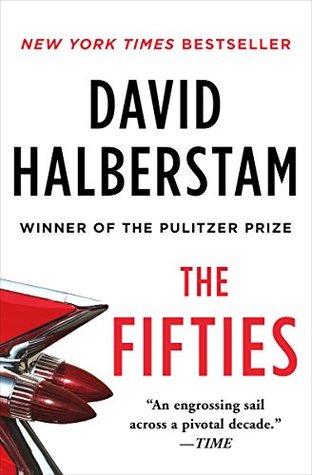More on this book
Community
Kindle Notes & Highlights
In the years following the traumatic experiences of the Depression and World War II, the American Dream was to exercise personal freedom not in social and political terms, but rather in economic ones. Eager to be part of the burgeoning middle class, young men and women opted for material well-being, particularly if it came with some form of guaranteed employment.
In July 1949, some nine months after his own shocking defeat by Harry Truman (which seemed to promise the Roosevelt coalition would go on ad infinitum), Thomas E. Dewey met with Dwight Eisenhower, then the president of Columbia University, to begin the process of coercing Ike to run for the presidency in 1952 as a Republican. Eisenhower’s notes of that meeting are unusually revealing of the Republican dilemma: “All middle-class citizens of education have a common belief that the tendencies towards centralization and paternalism must be halted and reversed. No one who voices these opinions can
...more
during the testimony on whether or not to share atomic information with the British, Oppenheimer was asked about the overall military value of research isotopes, which Strauss thought were extremely important. “Far less important than electronic devices,” Oppenheimer answered. Then he had paused for a moment. “But far more important than, let us say, vitamins. Somewhere in between.” That had been the answer of Oppenheimer, the snobbish Berkeley professor at his worst. It had, of course, generated a good deal of laughter in the hearing room, and Strauss had flushed. At the end of his testimony,
...more
“The Negroes in America are trying to do in 400 years what the Jews in the world have not wholly accomplished in 600 years. As a Jew I have no room in my mind or heart for racial prejudice. But ... I have come to know that if we sell one house to a Negro family, then 90 or 95 percent of our white customers will not buy into the community. That is their attitude, not ours.... As a company our position is simply this: We can solve a housing problem, or we can try to solve a racial problem but we cannot combine the two,” Levitt said in the early fifties.
Clara Kinsey was known on occasion to tell friends, “I hardly see him at night anymore since he took up sex.”
By 1947 he was preparing to publish the first book of his results—a simple report on the human animal studied in one of its highest-priority biologic acts. His conclusions do not seem startling today: that healthy sex led to a healthy marriage; that there was more extramarital sex on the part of both men and women than they wanted to admit; that petting and premarital sex tended to produce better marriages; that masturbation did not cause mental problems as superstition held; that there was more homosexuality than people wanted to admit.
AUTHOR’S NOTE I AM A CHILD of the fifties. I graduated from high school in 1951, from college in 1955, and my values were shaped in that era. I wanted to write a book which would not only explore what happened in the fifties, a more interesting and complicated decade than most people imagine, but in addition, to show why the sixties took place—because so many of the forces which exploded in the sixties had begun to come together in the fifties, as the pace of life in America quickened.


